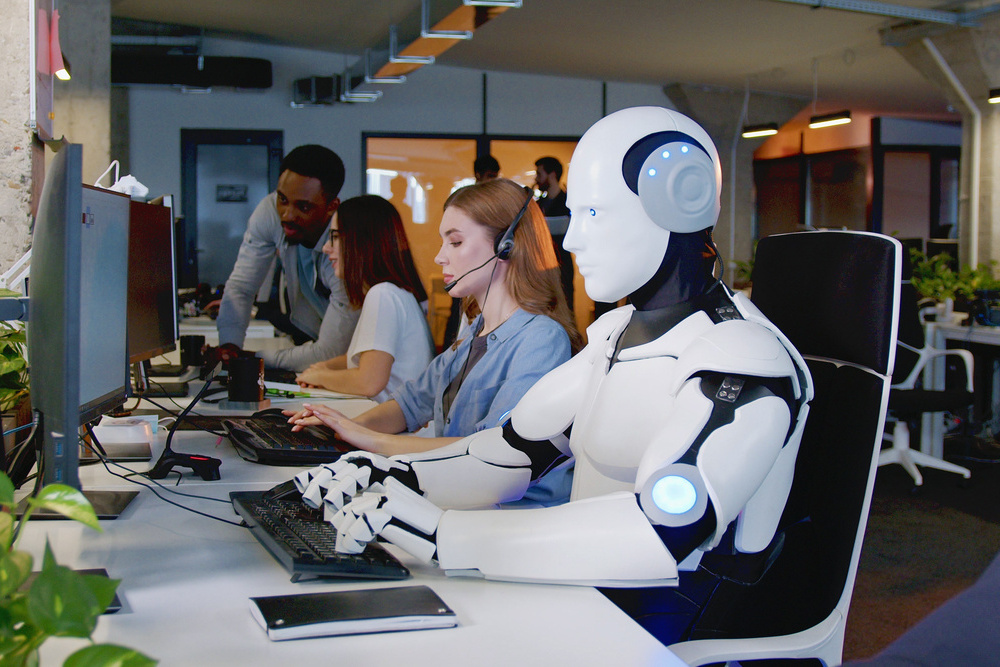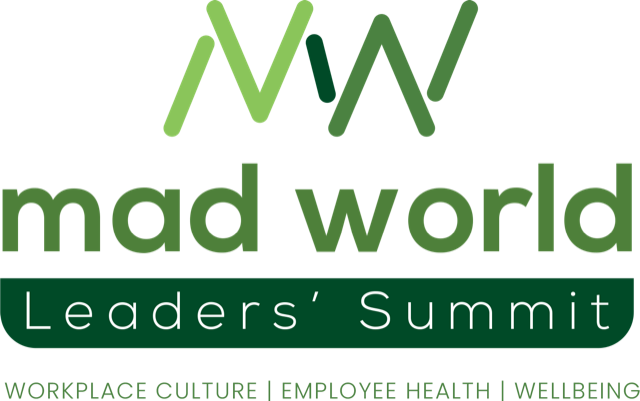Gen Z’s “lack of resilience” and “flakiness” comes up repeatedly in criticisms of 12 – 27 year olds today. Some of this is down to the differences in the way they perceive work, especially regarding their Health and Wellbeing. This is something that we’ve covered at length in our coverage recently in this feature on working with “difficult” Gen Z and this feature on what employers can do about the record numbers of young people out of work, especially for ill health.
As we’ve said in these previous features, there may be some validity to some of the criticisms of younger workers. Indeed, research from resiliency consultancy meQuilibrium (meQ) latest report on the ‘State of the Workforce’, finds Gen Z employees are:
– 64% more likely to struggle with morning motivation
– 25% more likely to report burnout
– 50% more likely to experience high job stress compared to older colleagues
– experience 34% higher anxiety about change
– experience 25% lower emotional stability during organisational transitions
– 20% higher incidence of physical stress symptoms like neck and shoulder pain
– 16% less likely to report experiencing more positive than negative emotions throughout their workday
Gen Z’s ‘struggle’ risks ‘organisational transformation’
But approaching Gen Z critically, rather than constructively and with curiosity, is likely to be counterproductive. Not to mention stressful for all involved. As meQ’s report concludes:
“The data suggests they [Gen Z] have difficulty managing change due to emotional turbulence… As this generation continues to expand their presence in the workforce, their pronounced struggle with change-related stress and uncertainty poses an escalating risk to organisational transformation efforts that cannot be ignored.”
There’s no doubt that growing up in such an uncertain world with the internet, and social media particularly, being like an extra limb rather than a piece of technology, has had its negative effects.
Gen Z was born into uncertainty and tech addiction
We are increasingly learning about the exact nature of these effects as more and more research is published. AXA, for example, talked about the “big relationship between tech, social media usage and the impact on the flourishing mindset” in young people in its Mind Health study which we covered here.
You could say that the generations that were born into a world where this kind of tech was already ubiquitous means that they are, essentially, guinea pigs in an experimentation before society (hopefully) finds balance.
What these younger employees most need from their older colleagues and line managers is support and – another word that has cropped up more and more in 2024 – compassion.
In this feature, we’ve put together some practical ways that employers can support their Gen Z employees, and other workers from younger generations.
1. Help them build up their resilience
Rather than complaining about their lack of resilience, how about helping them build up their skills in this area?
Employers can equip employees with “practical resilience skills like emotion control, work engagement, positivity, stress management and a sense of purpose”, through structured, specialised training programmes, says Jan Bruce, meQ CEO and co-founder. By doing this, she argues, organisations can improve what meQ calls “change readiness” in younger generations.
With change being such a constant feature of business today, these skills are essential in keeping younger employees in work (this feature reports on the record numbers of young people out of work) and creating a sustainable workforce.
Chris Tomkins, formerly Head of Wellbeing Propositions at AXA told us when launching AXA’s Mind Health report that he agrees these skills can be taught, saying:
“What we’ve demonstrated is that there is a skillset people can build in terms of dealing with others, society, their own responses, etc. Also, it’s not just about skills, either. It’s also about beliefs about oneself that feed into mind health.”
Similarly, CEM’s ‘Future Forward Workforce’ report identifies the ‘4Cs for young professionals to thrive’, that skills training should focus on, as: critical thinking, communication, collaboration and creativity.
2. Create 360 feedback loops
Research also repeatedly shows that leaders often think they are more connected with younger generations, and their messages are landing more effectively, than they actually are.
This underlines the importance of “transparent two-way feedback mechanisms to bridge the gap,” says Bruce.
Perkbox suggests providing multiple ways for younger workers to provide feedback and contribute to organisational decisions, such as regular feedback sessions and check-ins, surveys and open forums.
“Companies that actively listen to their young employees and make adjustments based on feedback are more likely to create a positive work environment that supports longterm retention,” says Perkbox.
3. Create structured reverse mentoring programmes
Often, the challenge with traditional feedback methods – where the more senior person tells the less senior person what they think – is that there is a power imbalance.
This can inhibit the psychological safety that the younger person feels.
“When you haven’t built up any psychological safety, you haven’t really built up a relationship,” says Patrice Gordon, author of Reverse Mentoring. “Why would you expect people to be able to feel safe enough to answer those questions for you, when you are a senior leader? You’ve got to be conscious of the power imbalance.”
That’s why Gordon advises setting up longterm, structured reverse mentoring programmes where senior leaders, and reverse mentors, commit to dedicating regular time to it. This time commitment starts from the rigourous application process, to sessions outlining the objectives and guard rails of the programme, chemistry meetings, shadowing sessions etc.
“It’s a lot of work, and so leaders need to be committed, and if they are not, then they shouldn’t waste their own, and everyone else’s time,” says Gordon. “It can’t be a standalone project, not linked to any kind of objectives or roadmap, either. Otherwise the reverse mentors are going to wonder – how does this fit into the overall picture?”
As AXA identifies in its report, skills for good mind health typically mature with age, which really underlines the value of the older workforce in terms of mentoring younger generations, who struggle with this more. On the flipside, due to the fact they’ve grown up with it, younger generations are often much more intuitive with new tech.
4. Help them navigate their career opportunities
As we’ve written about recently, Gen Z and younger workers tend to be much more interested in meaningful work, that genuinely makes a positive contribution, rather than chasing the most money.
This means that they may not want to follow the traditional linear career trajectory, which usually means progressing upwards through people management roles to secure promotion and a higher salary. If they think it will enrich their experiences, or teach them something new, they will readily consider sideways moves, or completely new jobs in different sectors or disciplines.
That’s why some forward thinking employers are looking at redesigning and restructuring career paths to provide alternatives in a bid to retain talent. Atkins Realis, for example, is encouraging its employees to take a proactive approach to navigating their career and future proofing their skills. In communications, this is called ‘Careers without boundaries’.
“For example, we’re taking engineers that ordinarily work in transportation and inviting them to go and work in a different market,” says Jo Rigby. “We are encouraging them to transfer their skills into new markets to keep themselves relevant.”
The company is doing this through AI with employees able to input their skills, and desired skills, and receive suggestions for roles which could be transferable. “It makes recommendations for roles that they often wouldn’t have thought of as well as allowing them to know how to build the skills they’re interested in,” says Rigby.
5. Invest in your office environment
Gen Z have been the most reluctant – according to some research – to return to the office. To help them feel more confident and supported at work it’s important to create a work environment that works for them.
For example, Susanne Iser, Director of Strategic Recruitment and Talent Acquisition at Beiersdorf AG talks about how she’s done this, in the CEMs report ‘The Future Forward Workforce’:
“We’ve rethought our working practices to make them more attractive to future generations while at the same time increasing our creativity, innovation and productivity”. For instance, Beiersdorf has created new offices which incorporate the latest findings on ‘new work’: ergonomic desks and seating to enhance physical health, along with spaces that accommodate individual styles of working such as big spaces, single spaces, teamwork spaces, chill area, benches and a nice restaurant.
“It’s a little like a professional playground for adults which fosters connection!” she says.
Rather than hot desking, employees are assigned a ‘neighbour’ so that they have specific people to connect with when they are in the office. It could be someone from a differnet team or your own, or someone you’re working on a cross function project with. “We understand that people are coming back to interact with, and get energised by, their colleagues. And for their mental health,” she says.
6. Help them experience risk and discomfort
One of the reasons that young people are struggling with resilience skills more than older workers is not just down to experience; it’s also been attributed to our increasingly comfortable, risk-averse, instant-gratification modern society.
Many of the simple, small discomforts of life have been stripped out, often by technology: the cringe of ringing your boyfriend or girlfriend via a landline and having to talk to their parent first; the awkwardness of calling any company from a pizza takeaway to the bus company and having to speak to a human; the discomfort of having to get up off your sofa and go to the shop to buy, then make, food when you’re hungry…
There are plenty of examples everywhere, and Covid led to many young people becoming even more entrenched in comfort zones. The most notable example is Gen Z’s reluctance to return to the office because staying at home and speaking to people on screens in their slippers is easier, cheaper and more comfortable than commuting.
The problem is that by taking this easier option they are not building up these skills. We spoke to one employer grappling with his younger employees’ resistance to working in the office post pandemic.
“If a junior employee sits on a call, on a screen, with a client, they probably won’t say anything,” he says. “They might not answer a question. They might even put their camera off as a way of avoiding this, and they might get away with it. And I don’t mean that in a critical way, because they’re being ‘lazy’… but they will avoid challenging themselves because it’s easier, and it’s human nature to take the easier route.”
By contrast, if junior colleagues are in a face to face meeting with clients it’s much more natural, and less confronting than on a screen, to turn to them and ask their opinion.
“Whereas when you’re in a camera situation, you feel like you’re calling someone out,” he says, adding that they also encourage younger employees to take calls in the open plan office rather than a meeting room, unless it’s confidential, to practice that slight discomfort. Also, they are able to get help from more experienced peers, should they need it.
Leaders / managers can be instrumental in building up their younger workers’ distress tolerance skills in this way, which are essential for thriving in work and personally, by supporting them through discomfort and seeing they can deal with it.












